2021 McLaren Sabre Sharpens the Supercar
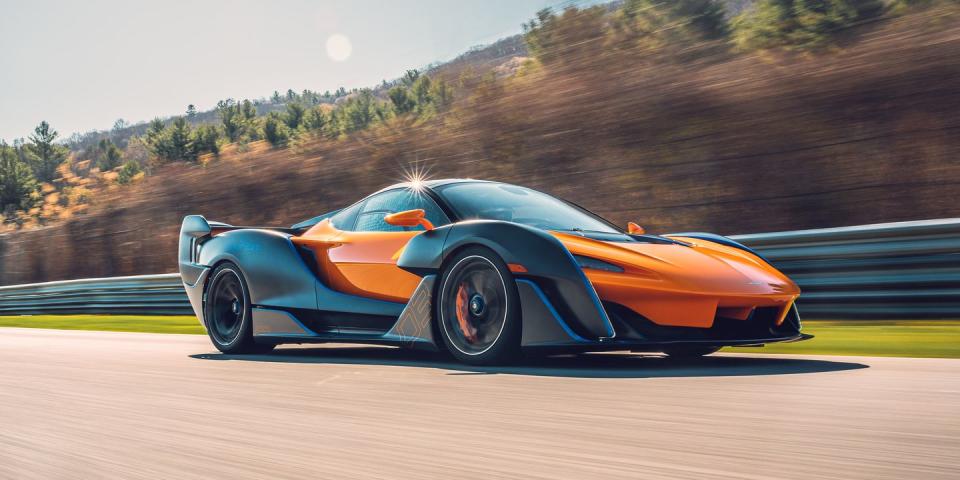
You won't confuse the Sabre with any other McLaren. McLaren Special Operations (MSO) made sure of it. The model is one of the division's bespoke commissions, meaning it's an extremely low-production car built to an exacting set of requirements from some of McLaren's highest-value customers. The result is a polarizing, wild car that was sold to just 15 people in the United States.
"Sabre was designed with a brief to be a show car for the road," Neil Underwood, MSO's global sales manager, tells us. "Customers wanted the car to look like it arrived from space. I think we delivered."
The design is beyond dramatic. While it shares its greenhouse with the ultra-aggressive Senna (homologating one for such a limited model would be a nightmare), more than 70 percent of the parts on the Sabre are unique to it. And because MSO built this car specifically for the United States, it didn't have to worry about meeting rules for any other country. That's why this is McLaren's widest car, with a body that appears to be shrink-wrapped over the mechanical components.
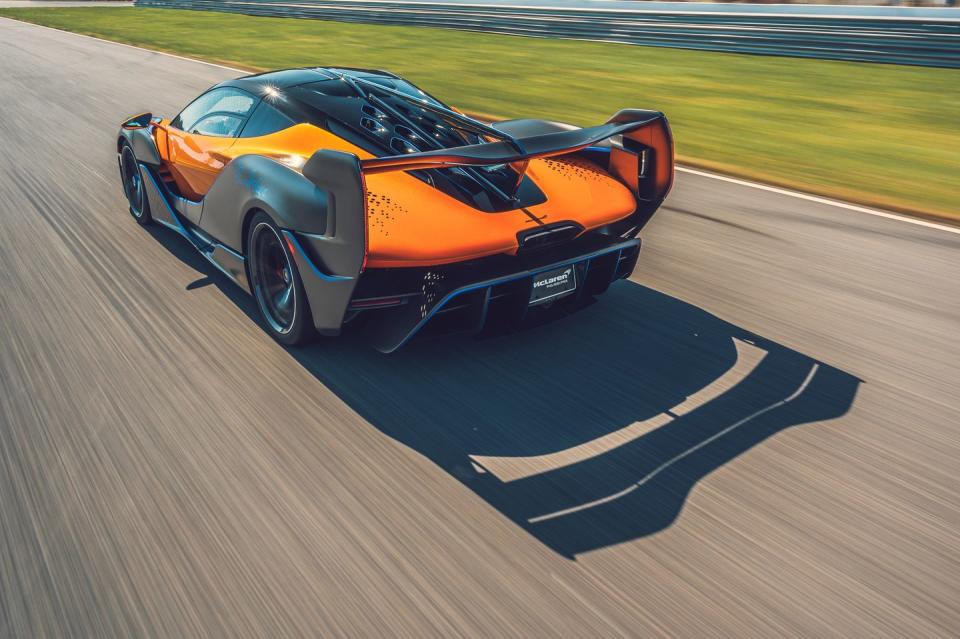
The vertical rear lights and center spine echo an LMP car, while bulging fenders appear to be keeping the car beneath from escaping. The side mirrors are smaller than global markets would allow and are manually adjusted. Those mirrors conspire with the wild top-mounted wing and honeycomb engine cover to limit rear visibility to a point that brings drama to every lane change. Underneath, MSO used a more compliant suspension than in other McLaren Ultimate Series cars, a nod to the Sabre's road-first intent. The twin-turbo 4.0-liter V-8 continues to evolve with new cylinder heads and revised mapping.
"Clients want to be able to do a two- or three-hour drive during a rally or when they're going to Pebble Beach," Underwood says. "They can do the event and then drive back home again, completely refreshed."
Or as refreshed as you can be after driving an 824-hp supercar with roots in McLaren's most track-focused model. Aero changes mean that the Sabre has about a third of the downforce of the Senna. And because it has 35 more horsepower, MSO says its 218-mph top speed makes it the fastest two-seat McLaren road car ever built. That's rather obvious when it's let loose on a track.
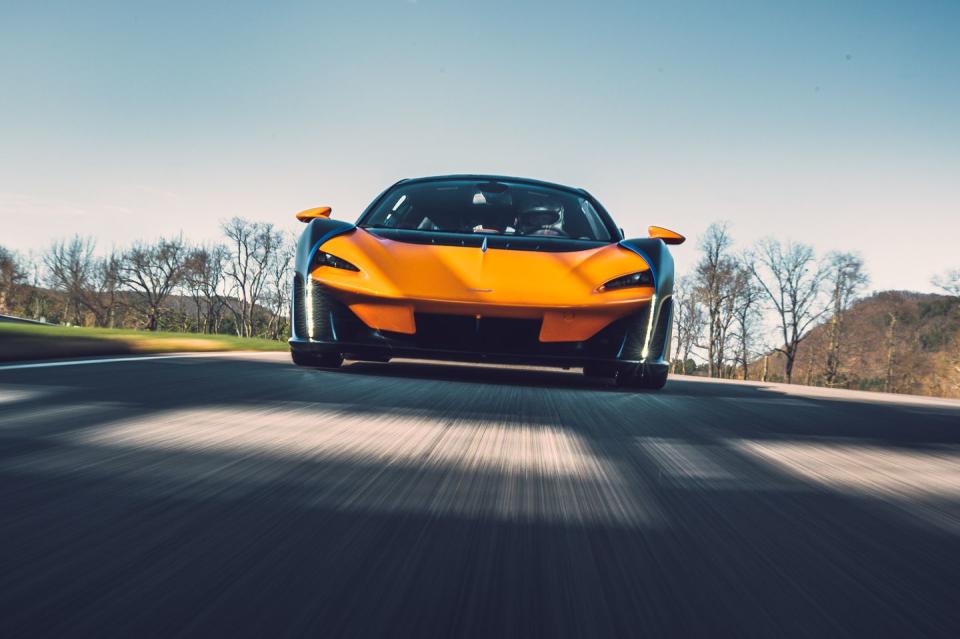
While Lime Rock Park may only be 1.5 miles long, it's easily one of the most challenging tracks in the country, full of nuance and corners that leave no room for mistakes. From behind the wheel of the Sabre, the short straight at Lime Rock has never passed so quickly, with the McLaren nudging 155 mph at the braking zone. The lower downforce means it gets nervous under heavy braking. It's more old-school than scary, a car you actually need to drive into a corner. That's because the rear wing is fixed, which means it can't function as an air brake as on other McLarens. The diffuser, though, is active—McLaren's first ever—and limits drag on the straights while going into downforce mode under braking.
The response from this version of McLaren's V-8 is mind altering, the first dip into full throttle rearranging scenery quicker than the mind can process. The Sabre is so fast, so visceral, that there are moments when your right foot will question whether full throttle is what your brain really wants.
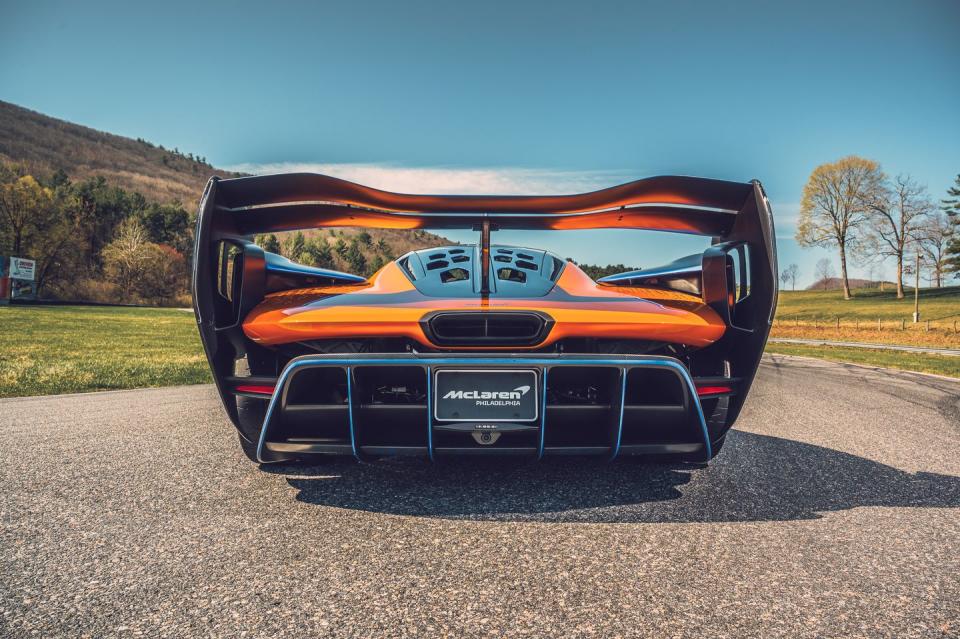
Its exhaust is made from Inconel, the same superalloy used on F1 cars. It provides a unique tone that's characterful at road speeds, issuing burbles and cracks that sound natural rather than synthetic and contrived. On the track, the exhaust note is higher pitched than that of other McLarens, giving the V-8 a distinctive wail.
Like in all McLarens, the feedback from every input is astounding. The hydraulic steering is the best out there—chattery, direct, and communicative. There's a playfulness while cornering that the Senna lacks, the softer setup making it less of a knife edge. A lift on the throttle will bring the tail around in a corner, and aggressive inputs don't give unexpected or unwelcome reactions.
The Sabre we drove is co-owned by customers who prefer to remain anonymous yet showcase their car to hundreds of thousands of followers on their Instagram accounts, @sparky18888 and @vtm_theking_4. Mixed messages indeed. This Sabre is one of the most personalized of the 15, finished in a livery that's a tribute to McLaren's current F1 cars, with Papaya Spark as the main color and Vega Blue accents. None of the accents are decals or vinyl either. The badges are electroforms, and everything else is painted—even the hidden logos under the diffuser and Bruce McLaren's signature on the rear haunches.
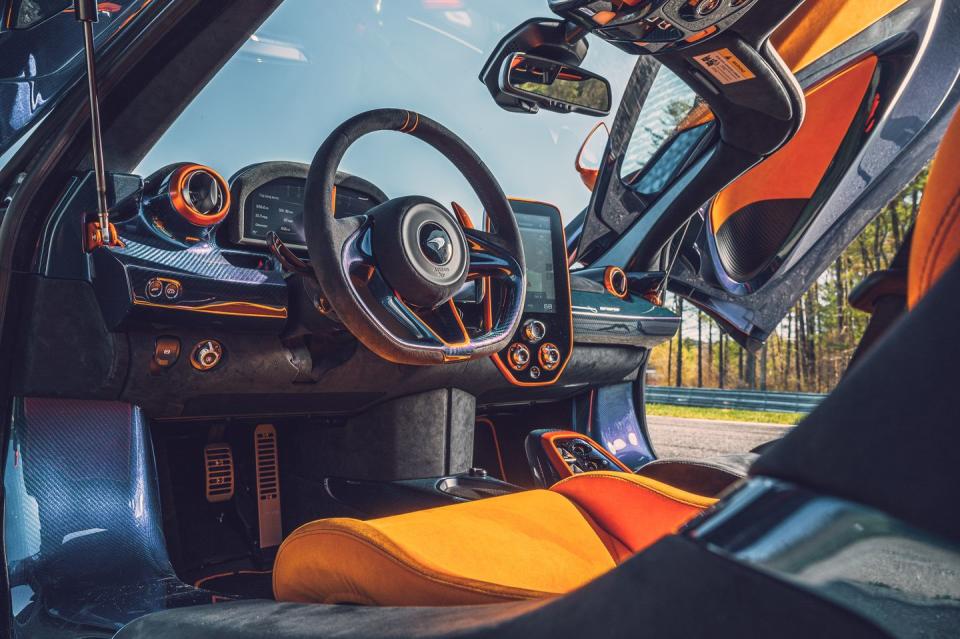
The interior also showcases a number of custom touches, like crowns embroidered in the seats and the uniquely blue tint to the carbon. The owners requested that the center console be signed by the F1 team. So MSO shipped the car to the 2020 Turkish Grand Prix, where it was signed by drivers Lando Norris and Carlos Sainz as well as McLaren Racing CEO Zak Brown. Current driver Daniel Ricciardo signed it on a visit to the team's headquarters. The owners also needed cupholders capable of taking Venti cups from Starbucks. MSO made it happen. Who said supercar owners don't drink coffee?
Even though McLaren built just 15 Sabres, the car was developed like a regular production model, with prototypes and thousands of miles of testing. It was in the wind tunnel and can survive a monsoon. MSO's clients were involved from day one, even providing feedback on the cars from early stages of testing. That's the Sabre's appeal. It isn't about driving, since a 720S will get you 85 percent of the way there for a relative fraction of the price. It's about the experience, all the way back to the car's gestation. And participating in the entire process, from concept to development to final production, is something most McLaren buyers will never experience. But most McLaren buyers aren't spending $4 million on a machine that looks like it fell to Earth from another galaxy.
You Might Also Like

 Yahoo Autos
Yahoo Autos 